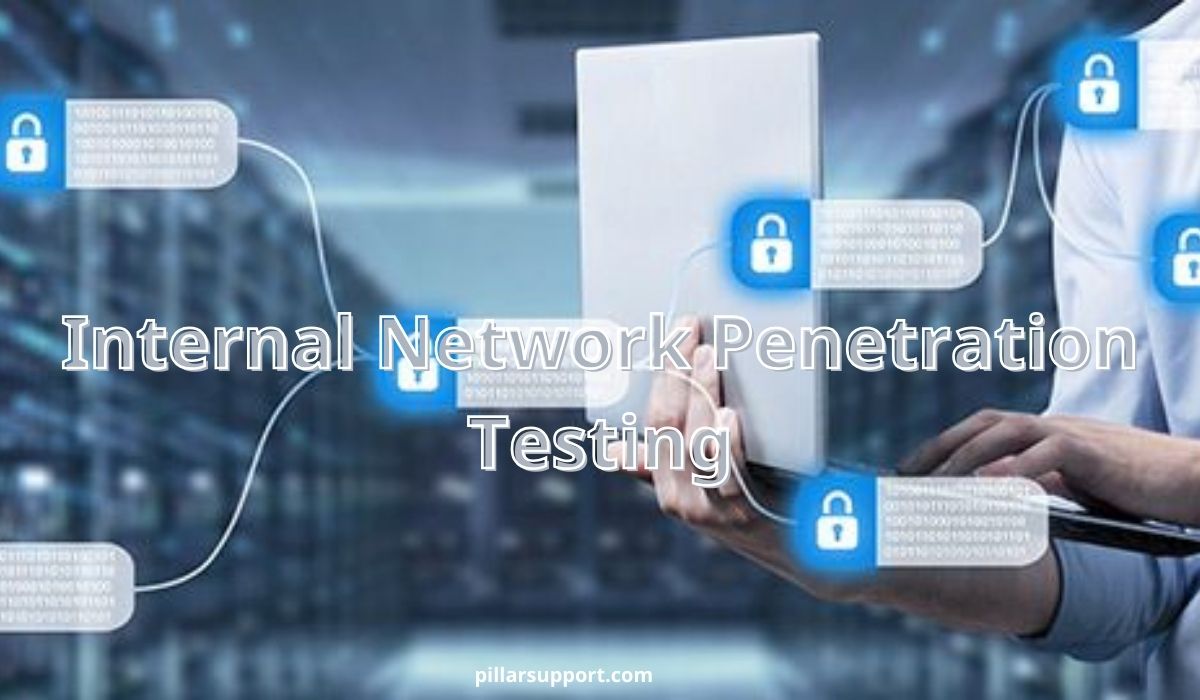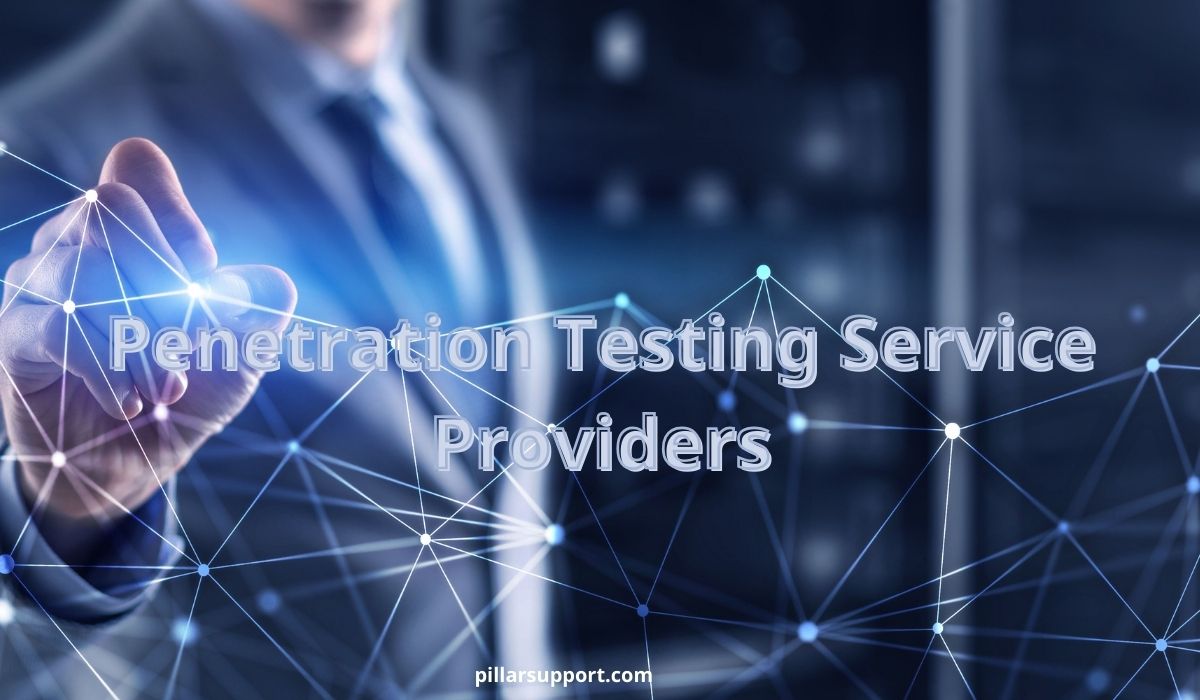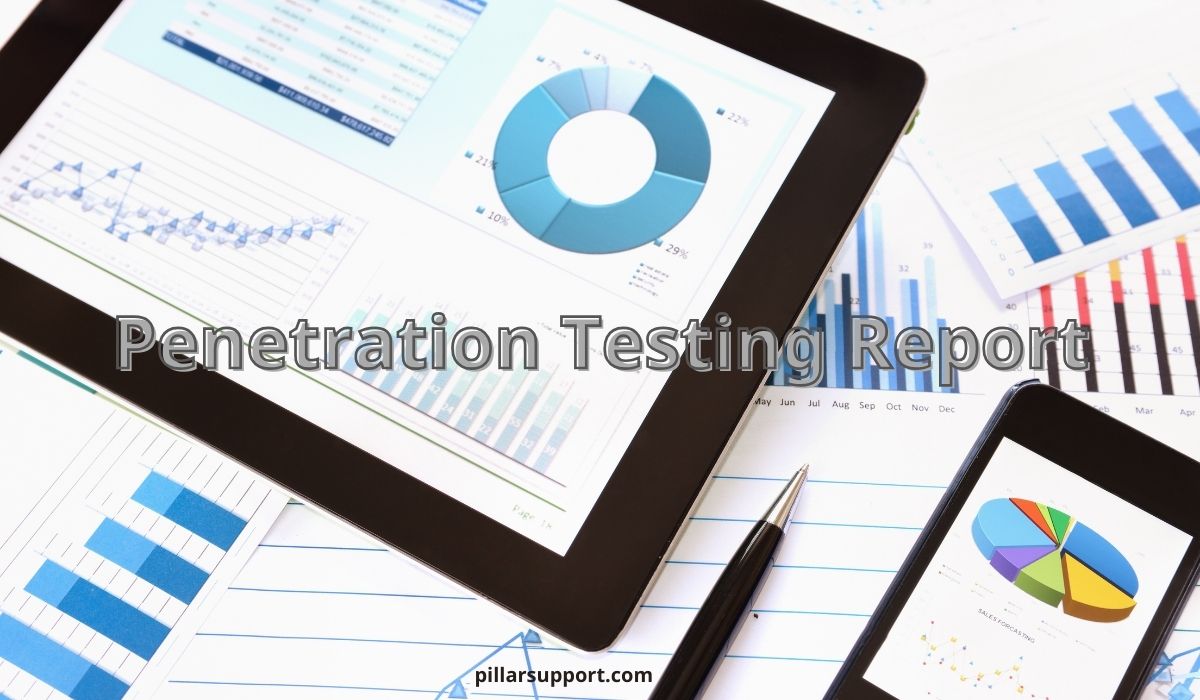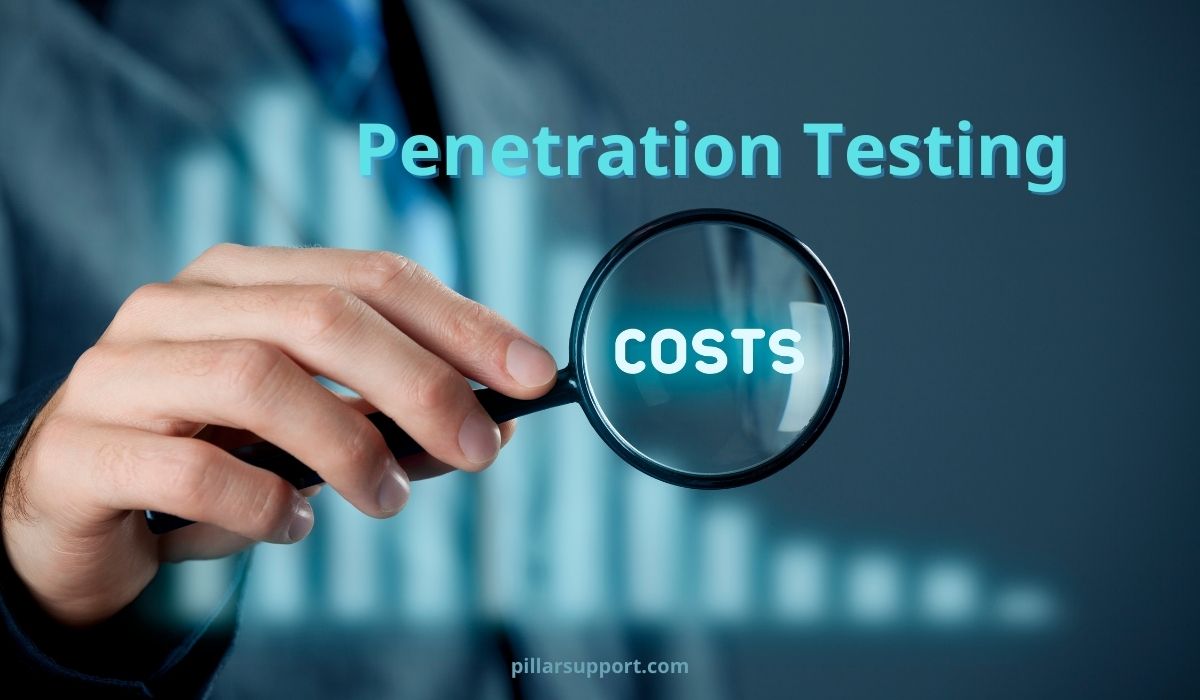Internal Network Penetration Testing Essentials
Internal network penetration testing is a crucial component of cybersecurity strategy that focuses on assessing the security posture of an organization’s internal network infrastructure. This type of testing simulates attacks from within the organization’s network to identify vulnerabilities and weaknesses that could be exploited by malicious insiders or external attackers who have gained unauthorized access.
Internal network penetration testing plays a vital role in safeguarding sensitive data, systems, and resources from insider threats, which can pose significant risks to an organization’s security. By proactively identifying and addressing vulnerabilities within the internal network, businesses can strengthen their defenses and prevent potential security breaches or data leaks.
This article aims to provide businesses with a foundational understanding of internal network penetration testing and its importance in mitigating insider threats, ultimately helping them enhance their overall cybersecurity posture.
Table of Contents
Understanding the Scope of Internal Testing
Internal network penetration testing encompasses a comprehensive evaluation of an organization’s internal network infrastructure to identify vulnerabilities and security weaknesses. The primary objective of internal testing is to assess the security posture of systems, applications, and devices within the internal network environment.
During internal network penetration testing, various aspects of the network are assessed, including:
- Network Devices: Routers, switches, firewalls, and other network infrastructure components are evaluated for potential misconfigurations and vulnerabilities that could be exploited by insiders.
- Servers: Internal servers, including web servers, database servers, and domain controllers, are assessed for vulnerabilities and weaknesses in their operating systems, applications, and configurations.
- User Workstations: Desktops, laptops, and other endpoints used by employees are tested for insecure configurations, weak passwords, and potential malware infections that could grant attackers a foothold within the network.
- Active Directory: This critical directory service, if applicable in your environment, is evaluated for misconfigurations and potential vulnerabilities that could allow attackers to escalate privileges or gain unauthorized access to user accounts.
- Security Controls: Existing security measures, such as access control lists, firewalls, intrusion detection systems (IDS), and data loss prevention (DLP) solutions, are tested to assess their effectiveness in preventing insider attacks.
- Applications: Web applications, internal applications, and custom-developed software are assessed for vulnerabilities that could be exploited by malicious actors to gain unauthorized access or compromise sensitive data.
It’s important to note that the scope of your internal penetration test can be customized based on your specific needs and risk profile. Working with a reputable service provider allows you to define a comprehensive yet targeted scope that addresses your most critical security concerns.
Methodologies and Approaches
Internal network penetration testing utilizes various methodologies and approaches to simulate real-world insider attacks, uncover vulnerabilities, and evaluate the effectiveness of existing security controls. Here’s a closer look at these techniques:
Methodologies
- Black-box testing: Simulates a scenario where the tester has limited knowledge about the internal network, mimicking an external attacker who has gained initial access through social engineering or other means.
- Gray-box testing: Provides the tester with some information about the network, such as user privileges and network topology, reflecting a scenario where an attacker has compromised a low-level account within the organization.
- White-box testing: The tester has full knowledge of the network and its configuration, similar to a scenario where a trusted insider with authorized access is attempting to exploit vulnerabilities.
Common Approaches
- Enumeration and Discovery: Testers begin by identifying and enumerating all accessible resources, including servers, workstations, databases, and network devices, within the internal network environment.
- Vulnerability Assessment: A comprehensive vulnerability assessment is conducted to identify known vulnerabilities and weaknesses in systems, applications, and services deployed on the internal network.
- Exploitation: Testers attempt to exploit identified vulnerabilities to gain unauthorized access to systems and sensitive data. This phase involves exploiting misconfigurations, weak authentication mechanisms, and other security weaknesses.
- Privilege Escalation: Once initial access is gained, testers attempt to escalate privileges to gain higher levels of access within the internal network environment. This involves exploiting vulnerabilities in access controls, user permissions, and privilege management systems.
- Lateral Movement: Testers simulate insider threats by attempting to move laterally within the internal network environment. This involves pivoting from one compromised system to another to explore the extent of the security breach and assess the effectiveness of network segmentation and access controls.
- Data Exfiltration: Testers attempt to exfiltrate sensitive data from compromised systems to assess the effectiveness of data protection mechanisms and incident detection capabilities.
By employing these methodologies and approaches, internal network penetration testing aims to identify security weaknesses, misconfigurations, and vulnerabilities that could be exploited by malicious insiders or external attackers who have gained unauthorized access to the internal network environment. This enables organizations to implement appropriate remediation measures and strengthen their overall security posture.
Identifying Vulnerabilities and Weaknesses
In internal network penetration testing, the process of identifying vulnerabilities and weaknesses involves thorough reconnaissance, scanning, and analysis of the internal network infrastructure. Here’s how it typically unfolds:
- Scanning and Enumeration: Testers utilize various tools and techniques to scan your network and identify active devices, operating systems, applications, and services. This information-gathering process helps them understand your network topology and potential entry points for attacks.
- Vulnerability Assessment: Identified systems and applications are then assessed for known vulnerabilities using automated vulnerability scanners and manual penetration testing techniques. These techniques may involve exploiting publicly known vulnerabilities, utilizing custom-developed tools, or applying social engineering tactics.
- Misconfiguration Analysis: Testers analyze the configuration of network devices, systems, and security controls to identify potential misconfigurations that could be exploited by attackers. This may involve examining access control lists, firewall rules, user permissions, and system settings.
- Privilege Escalation and Lateral Movement: Testers attempt to exploit identified vulnerabilities and misconfigurations to gain access to systems, elevate their privileges, and move laterally across the network. This process helps them discover vulnerabilities that could be chained together to launch more sophisticated attacks.
Common Vulnerabilities Found in Internal Network Environments
- Unpatched systems and applications: Failure to patch known vulnerabilities in operating systems, applications, and firmware leaves your network susceptible to exploitation by readily available attack tools.
- Weak passwords and password management practices: Weak passwords, password reuse, and lack of multi-factor authentication (MFA) significantly increase the risk of unauthorized access through brute-force attacks or social engineering tactics.
- Misconfigured access controls: Improperly configured access control lists (ACLs), firewall rules, and user permissions can grant unauthorized users access to sensitive systems and data.
- Insecure configurations: Default configurations, unnecessary services running, and disabled security features on network devices, systems, and applications can create exploitable weaknesses for attackers.
- Social engineering vulnerabilities: Employees susceptible to social engineering tactics like phishing emails and pretext calls can unknowingly provide attackers with access credentials or sensitive information.
By employing a combination of automated tools and manual techniques, internal network penetration testing helps identify these and other vulnerabilities within your internal network. Addressing these vulnerabilities through timely patching, enforcing strong password policies, implementing multi-factor authentication, and reviewing security configurations is crucial for mitigating the risk of insider threats.
Mitigation and Remediation Strategies
Following an internal network penetration test, you’ll likely have a list of identified vulnerabilities and weaknesses. Now comes the crucial step of prioritizing and addressing these issues to effectively mitigate the risk of insider threats. Here’s how to approach this process:
Prioritization
- Exploitability: Prioritize vulnerabilities that can be easily exploited by attackers with limited technical knowledge or resources. These “low-hanging fruit” vulnerabilities pose a significant immediate risk and should be addressed first.
- Severity: Consider the potential impact of a successful exploit. Vulnerabilities that could lead to data breaches, system outages, or reputational damage should be prioritized for remediation.
- Prevalence: If a vulnerability affects multiple systems or applications, addressing it will have a broader impact on improving your overall security posture.
Remediation Strategies
Once you’ve prioritized the vulnerabilities, you can implement various strategies to address them:
- Patching: The most common and effective way to address vulnerabilities is to apply security patches from vendors as soon as they become available. Prioritize patching critical vulnerabilities identified during the test.
- Configuration changes: Review and adjust security configurations of network devices, systems, and applications to address misconfigurations identified during testing. This might involve tightening access controls, disabling unnecessary services, or enabling security features.
- Password management: Enforce strong password policies, encourage regular password changes, and implement multi-factor authentication (MFA) to significantly reduce the risk of unauthorized access through weak credentials.
- Security awareness training: Educate employees about social engineering tactics and best practices for protecting sensitive information. This can help them identify and avoid falling victim to social engineering attacks.
- Segmentation: Implement network segmentation to isolate critical systems and data from less sensitive areas of your network. This can limit the potential impact of a successful attack and make it more difficult for attackers to move laterally across the network.
- Continuous monitoring: Implement security monitoring tools and processes to continuously monitor your network for suspicious activity and identify potential threats early on.
Additional Considerations
- Timeline: Establish a clear timeline for remediating identified vulnerabilities, prioritizing critical issues and addressing them within a defined timeframe.
- Resources: Allocate the necessary resources to implement remediation measures effectively. This may involve internal IT staff, external security professionals, or a combination of both.
- Retesting: Consider retesting your network after implementing remediation measures to verify that the vulnerabilities have been effectively addressed and your security posture has improved.
By prioritizing vulnerabilities, implementing appropriate remediation strategies, and continuously monitoring your network, you can significantly reduce the risk of successful insider attacks and strengthen your overall internal network security posture.
Compliance and Regulatory Considerations
While internal network penetration testing primarily focuses on mitigating insider threats, it also plays a crucial role in helping businesses comply with various industry standards and regulatory requirements. Here’s how:
Compliance Benefits of Internal Penetration Testing
- Proactive Risk Management: By proactively identifying and addressing vulnerabilities, internal testing demonstrates a commitment to proactive risk management and helps organizations stay ahead of potential security threats. This proactive approach is often viewed favorably by regulatory bodies.
- Meeting Regulatory Requirements: Several regulations, such as the Payment Card Industry Data Security Standard (PCI DSS) and the Health Insurance Portability and Accountability Act (HIPAA), require organizations to conduct regular penetration testing to assess the security of their systems and data. Internal testing helps ensure compliance with these mandates and avoids potential penalties for non-compliance.
- Demonstrating Due Diligence: In the event of a security breach, organizations can leverage internal penetration testing reports as evidence of their due diligence in identifying and addressing vulnerabilities. This can help mitigate potential legal ramifications and demonstrate a commitment to data security to stakeholders.
- Improved Security Posture: By addressing vulnerabilities identified during testing, organizations strengthen their overall security posture, making them less susceptible to cyberattacks and data breaches. This not only benefits compliance efforts but also safeguards sensitive information and protects the organization’s reputation.
Ensuring Compliance is Essential
Failing to comply with relevant regulations can result in significant consequences for businesses, including:
- Financial penalties: Regulatory bodies may impose hefty fines for non-compliance, impacting the organization’s financial standing.
- Reputational damage: Public disclosure of non-compliance can damage an organization’s reputation, potentially leading to lost business opportunities and customer trust.
- Legal repercussions: In some cases, non-compliance can lead to legal action, including lawsuits and potential criminal charges.
By investing in regular internal network penetration testing, businesses can proactively identify and address vulnerabilities, minimize the risk of cyberattacks and data breaches, and demonstrate their commitment to data security, ultimately achieving compliance with relevant regulations and safeguarding their overall security posture.
Benefits of Internal Network Penetration Testing
Internal network penetration testing offers several key benefits for businesses looking to enhance their cybersecurity posture and protect sensitive data. Here are some of the primary advantages:
- Identifying Vulnerabilities: Internal network penetration testing helps organizations identify vulnerabilities and weaknesses within their network infrastructure, systems, and applications. By simulating real-world attack scenarios, testers can uncover security flaws that could be exploited by malicious actors to gain unauthorized access to sensitive data or disrupt business operations.
- Mitigating Insider Threats: Insider threats pose a significant risk to organizations, as employees or other trusted individuals may intentionally or unintentionally compromise security. Internal network penetration testing helps detect insider threats by assessing the effectiveness of access controls, user permissions, and other security measures designed to prevent unauthorized internal access.
- Preventing Data Breaches: By identifying and addressing security vulnerabilities proactively, internal network penetration testing helps organizations mitigate the risk of data breaches. By closing security gaps and implementing recommended security controls, businesses can reduce the likelihood of unauthorized access to sensitive data and protect their reputation and financial assets.
- Ensuring Regulatory Compliance: Many industries are subject to regulatory requirements related to data security and privacy. Internal network penetration testing helps organizations demonstrate compliance with regulatory standards by identifying and addressing security risks that could lead to non-compliance. By conducting regular testing, businesses can ensure that they meet regulatory requirements and avoid potential fines and penalties.
- Enhancing Incident Response Preparedness: Internal network penetration testing provides valuable insights into an organization’s incident response capabilities. By simulating cyber attacks and assessing how effectively the organization detects, responds to, and mitigates security incidents, businesses can identify gaps in their incident response procedures and strengthen their overall security posture.
- Improving Security Awareness: Internal network penetration testing raises awareness among employees and stakeholders about the importance of cybersecurity and the potential risks associated with internal network vulnerabilities. By engaging employees in the testing process and providing training on security best practices, organizations can foster a culture of security awareness and empower employees to play an active role in protecting sensitive data.
Overall, internal network penetration testing is a proactive approach to cybersecurity that helps businesses identify and address security risks before they are exploited by malicious actors. By leveraging the insights gained from testing, organizations can strengthen their defenses, protect sensitive data, and maintain the trust of customers and stakeholders.
Our Service: Internal Network Penetration Testing by Pillar Support
At Pillar Support, we understand the critical importance of securing your organization’s internal network against potential threats and vulnerabilities. That’s why we offer comprehensive internal network penetration testing services designed to identify and mitigate security risks before they can be exploited by malicious actors.
Through our partnership with Vonahi Security, a trusted leader in cybersecurity testing and assessment, we deliver cutting-edge penetration testing solutions tailored to meet the unique needs of your business. Our team of experienced cybersecurity experts utilizes advanced tools and methodologies to conduct thorough and effective internal network penetration tests, providing you with valuable insights into your network security posture.
With Pillar Support, you can trust that your internal network will undergo rigorous testing to uncover vulnerabilities and weaknesses that could compromise your organization’s data security. Our services are designed to help businesses of all sizes strengthen their cybersecurity defenses and protect their most valuable assets.
Ready to take proactive steps to secure your internal network?
Contact Pillar Support today at 212-255-3970 and speak with Michael or Richard to discuss a tailored penetration testing solution for your company. Don’t wait until it’s too late – safeguard your business against cyber threats with our expert penetration testing services.
Frequently Asked Questions
What is the Scope of Internal Penetration Testing?
The scope of internal penetration testing typically includes assessing the security of an organization’s internal network infrastructure, systems, and applications. It involves identifying vulnerabilities and weaknesses that could be exploited by malicious insiders or external attackers who have gained access to the internal network.
What are the Five Network Penetration Testing Techniques?
The five network penetration testing techniques include:
1. Port Scanning
2. Vulnerability Scanning
3. Exploitation
4. Post-Exploitation
5. Reporting and Documentation
What are the Disadvantages of Internal Penetration Testing?
Some potential disadvantages of internal penetration testing include:
1. Disruption to normal business operations during testing
2. Possibility of false positives or false negatives in findings
3. Resource-intensive process requiring skilled professionals
4. Limited scope in identifying external threats targeting internal networks
Why is Internal Network Penetration Testing Important?
Internal network penetration testing is important because it helps organizations identify and mitigate security vulnerabilities within their internal networks. By conducting thorough testing, businesses can uncover weaknesses that could be exploited by malicious insiders or external attackers who gain unauthorized access to the internal network.
How Much Does Internal Penetration Testing Cost?
The cost of internal penetration testing can vary depending on factors such as the size and complexity of the network, the scope of testing, and the expertise of the testing provider. On average, businesses can expect to pay anywhere from a few thousand dollars to tens of thousands of dollars for internal penetration testing services.



